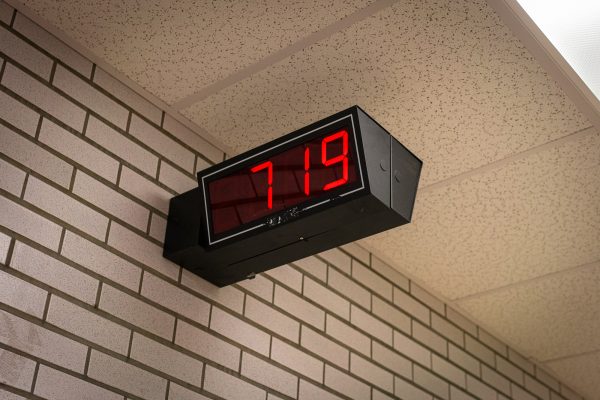70 Percent
Soaking the rich for a better future
It is the duty of the legislature to ensure that wealth (and income, by default) is not concentrated in the hands of a powerful few, because to do so is to begin destroying the fabric of America.
January 28, 2019
To most Americans, taxes are an inevitable fact of life (the only constancy, of course, besides death). We groan about them, we question their necessity, and we complain about the government’s wasteful spending, but in the end, we pay them diligently because a world without taxation would be one without public schools, functional roads, public libraries, or other underpinnings of American life. Arguably, and especially as young people pre-taxation, we also really don’t understand the tax code, preferring to defer to TurboTax or professional tax accountants to work its intricacies.
This is why it was so shocking when tax policy flew into the mainstream consciousness after Congresswoman Alexandria Ocasio-Cortez (D-NY) dominated headlines with her proposal that marginal tax rates on Americans earning over $10 million be raised to 70%. Conservative and centrist pundits were outraged, arguing that her “crazy” proposal was an attempt to turn the United States into a socialist regime, antithetical to all American values and guaranteed to destroy the American economy. First, regardless of the validity of her proposal, the blowback against Ocasio-Cortez was sexist and racist, rife with belittlements of her intelligence when she likely has more economic knowledge than the majority of her detractors (she holds an economics degree from Boston University, while some critics like Scott Walker and Rush Limbaugh…dropped out of college, not that there’s any shame in that). Additionally, the majority of American voters (59%) support her proposal, including 45% of Republican voters, a stark contrast to the 34% that approve of the massive tax cut that the GOP-controlled legislature rammed through two years ago. And finally, we should all applaud Ocasio-Cortez for pushing both the media and ordinary Americans to debate and care about actual policy, rather than personality-based issues.
But let’s talk about marginal tax rates. First, what are they? Here is a great explainer, complete with cartoons. Essentially, when AOC calls for a 70% marginal tax rate she’s not suggesting that the government take 70% of everyone’s income, which would be a true flat income tax. America, like most countries, follows a progressive marginal tax system, where you are taxed at a certain rate based on the amount of income that falls into tax brackets (basically a tax on each additional dollar). For example, say that you, an upper middle class North Allegheny-American, earn individually $100,000 a year before taxes. What appears to be the tax rate for your income is 24%, so you would assume that you pay $24,000 in taxes. In actuality, your income is divided into brackets. According to the 2019 bracket, your first $9,700 is taxed at 10%, so you owe $970 in federal income taxes. The next bracket is up to $39,475, taxed at 12%. So $39,475 minus $9,700 ($29,775) would result in $3,573 in taxes. The next bracket is between $39,475 and $84,200, taxed at 22%, or $9,839.50 owed. The final amount you would be taxed is for income between $84,200 and $160,725 at 24%, resulting in $3,792 in taxes. In total, you would owe in federal income taxes $18,174.50, pretty far off from the original estimated $24,000. And say, miraculously, you moved on to an even better job that bumped your income up to the next tax bracket, paying you $161,000. Rather than drastically changing the amount that you’re taxed, it would only be the extra $225 that is taxed in the next bracket, at 32%. Although this seems fairly reasonable, the problem is once you get into the extremely high incomes. The highest tax bracket currently in place is for incomes over $510,300, taxed at 37%. That might strike you as pretty unfair, especially because it appears that those brackets ought to growing incrementally and taxed higher incrementally. To quote Ocasio-Cortez herself, “as you climb up this [income] ladder, you should be contributing more,” helping support American infrastructure and investing in the future. Basically, the richest percentage are taxed at approximately the same rate as those in the American upper middle class while earning hundreds of thousands more (a good portion of which is likely inherited). And that’s where AOC’s proposal comes in. She wants to increase the number of brackets, eventually ensuring that the highest tax bracket would be at $10 million and taxed at 70%, a proposal that would be only applicable to at most 1% of Americans (about 16,000 individuals). And once again, those multimillionaires wouldn’t have to pay $7 million in taxes, only the amount earned above that $10 million line would be taxed that high.
“But more than a question of revenue, it’s a question of morality, of preventing excess (especially unmerited excess) in a system already geared towards the wealthy. It’s about ensuring that a few people are not bathed in cash as millions more barely scrape by.”
There are three main arguments against this “radical” new policy, each of which is flawed in its own way. The first argument is that America is not a socialist country but is, rather, a free-market capitalist economy (not wholly true) that relies on simplicity and wants a clean system to reward its citizens for its hard work. Thus, taxes should be as simple and low as possible to stimulate growth, a proud American tradition. Ergo, what’s historically been done is right and we should always follow the path of our predecessors. A 70% marginal income tax would be communism and anyways, hasn’t worked in any country…except for the United States itself. Before Ronald Reagan, the American income tax system was complex, comprising of many tax brackets where the extremely rich were taxed at higher rates than the moderately rich and where the highest marginal tax rate never fell below. Under President Hoover, there was a high of 55 brackets. The famously laissez-faire president actually also passed the Revenue Act of 1932, doubling income tax rates on the rich to close the budget deficit. FDR then passed the 1935 Revenue Act (“soak the rich” act), raising the highest tax rate even higher to 79%, as much of the country agreed that the government was responsible for combating extreme wealth and could use this revenue to fund Depression-era social programs. This trend continued under subsequent presidents; under Eisenhower, for example, the lowest marginal rate (income under $15,357) was 20%; the top rate for someone earning over $2.3 million was a whopping 91%.
Of course, back then, calculators were extremely rudimentary, so it would make sense to try to simplify the system a bit, especially once you added in deductions and exemptions. So Ronald Reagan, the great free market president, reduced the number of brackets to 2: in 1988, 28% for those earning more than $46,385 and 15% for incomes less than that. Simultaneously, we saw a marked (and growing) wealth and income gap in America which has culminated to the point that in 2015, the wealthiest 1% took home an average of 26.3 times more than the remaining 99% of Americans. In Pennsylvania at that time, there was an approximate 22:1 ratio, so marginally better. The years in which America had one of the most prosperous time periods, under Truman and Eisenhower, the highest marginal rate was between 91 and 94%. There thus isn’t an immediate correlation between high marginal tax rates/the number of brackets and American prosperity, but there does seem to be an inverse one in regards to tax rates and income/wealth inequality. In fact, for those chastising Ocasio-Cortez for going beyond the pale with her proposal, it is the current status quo and anti-tax zealots like Grover Norquist that are radical. Ocasio-Cortez’s proposal is merely a realignment to the 20th century norm, if even that, as cutoffs for extremely high tax brackets were often much lower than $10 million, even after inflation. And to put in perspective, although the US doesn’t explicitly tax wealth (accumulated worth), the average Congressperson–in charge of writing American tax laws–is worth 12 times as much as the median US household. The median Representative is worth $900,000, while the median Senator is worth $3.2 million. Congressional salaries start off at a cool $174,000, which doesn’t even account for income from other employment (owning a farm, fellowship for a university, etc.). No wonder they appear so reluctant to raise rates for higher tax brackets.
The second argument–and probably the one with the most potential weight–is that raising taxes on the rich dramatically will disincentivize growth and innovation, squashing start-ups and dragging the American economy down. To an extent, that makes sense. High taxes might push the rich to move their wealth into offshore bank accounst, meaning less revenue for the government. And additionally, less kept income would mean less money for Americans to spend, reducing economic activity and leading to less entrepreneurship, lower rates of business formation, and less jobs. A 2018 paper written by a Stanford researcher found that raising the top marginal tax rate would negatively affect all income earners, lowering GDP by about 6% in the long run. Conservative economists like R. Glenn Hubbard have argued that raising taxes on the rich discourages self-employment at all levels, a troubling claim in an economy whose workers are increasingly self-employed or hired by self-employed people. This overall argument, that people are motivated to earn millions and will refrain from expanding their enterprises due to high marginal rates, depressing entrepreneurship for the next generation as well, seems to be logical.
But let’s move into the real world. In actuality, business dynamism (a measurement of firm entry, expansion, and death) has been falling in the US since the 1980’s, when Reagan enacted his tax reforms. That means that a) the US is becoming less entrepreneurial, probably because we have picked all the low-hanging fruits of innovation so new ideas are becoming more difficult and more expensive to find and b) the immense investment that we assumed would happen due to low tax rates actually didn’t really happen. Additionally, if you just look at the evidence, the Bay Area and NYC are the two largest hubs of innovation in the US even though California and New York have the 48th and 49th most favorable business-tax climates. The US has lower marginal tax rates than most other OECD (benchmark for “developed) nations, with the general upper bracket tax being around 50 to 60%, yet has a lower rate of entrepreneurship than most Western and Central European countries. Again, in the 1950’s and 1960’s, when marginal tax rates were at their highest, America saw high productivity, landed men on the moon, invented the electronic computers and a pseudo-Internet (APARNET), and saw the first kidney and heart transplants. This evidence is all anecdotal–high marginal tax rates don’t automatically make everything better–but it suggests that economic prosperity depends more on a location’s culture, infrastructure, and support for research than simply tax rates. Furthermore, the evidence suggests that higher marginal tax rates would in fact boost innovation. Everything from new cancer drugs (1971 War on Cancer) to fracking, which is revolutionizing American energy (and holds its own host of problems) came about due to federally funded research, an investment that has fallen from 12% of the national budget in the 1960’s to about 2.7% in the last fiscal year. If there was really a concern about American innovation, perhaps there should be greater focus on the money appropriated to federal research spending rather than the tax rates for a few millionaires.
“It is the duty of the legislature to ensure that wealth (and income, by default) is not concentrated in the hands of a powerful few, because to do so is to begin destroying the fabric of America and its fundamental notion of the equality of being and of opportunity extended to all people that we are still striving today to fulfill.”
The final complaint against this tax plan and, in my opinion, the most insidiously revealing is one often leveraged against young women of color in particular. The same people that denied climate change as California burned and Puerto Rico flooded, that offer only thoughts and prayers after mass shootings in the hopes that change will occur spontaneously, that lounge about on cable news amid a government shutdown of their own making in this generation’s version of “let them eat cake,” call Alexandria Ocasio-Cortez’s plan simply infeasible and laughably stupid, a socialist fever dream not at all backed by research or evidence. Of course, no one mocked a young Paul Ryan when he dreamed of cutting Social Security in his college years; they called him a policy wonk and elevated him to Speaker of the House. But I digress. Once again, the research is on AOC’s side. A bevy of respected economists support raising the top marginal tax rate, from Nobel Laureate Peter Diamond and UC Berkeley’s Emmanuel Saez (whose research estimates an optimal tax rate of 73%) to Nobel Laureate Paul Krugman to former head of President Obama’s Council of Economic Advisors Christina Romer (supports a rate of over 80%) to the University of Bonn’s Fabian Kindermann and the University of Pennsylvania’s Dirk Krueger (whose research supports a return to 91%).
This past week, the annual World Economic Forum was held in Davos, Switzerland, a gathering-ground of the world’s elite. It was telling when a room full of American multibillionaires erupted into nervous laughter at the mention of AOC’s proposal, scoffing at the notion that the world’s economic system as it is could be broken. I find their callous attitude infuriating, and even more so the fact that people are more concerned about a marginal tax rate hike affecting a fraction of the population than the fact that 40% of Americans struggle to pay for at least one basic need. To those who earn thousands of dollars an hour–and who aren’t paid by the hour and thus won’t be incentivized to work less due to higher taxes–a few million more dollars doesn’t mean much. Raising the highest marginal tax rate essentially gives two options to the extremely rich: spend money on expanding businesses, hiring more workers, investing in R&D and then paying taxes or simply paying high taxes, which would be spent on infrastructure, education, and just generally investing in the future. I would probably go even further than Ocasio-Cortez and suggest that we begin taxing concentrated wealth, raise capital gains tax rates (from which the rich derive most of their income), crack down on tax havens, and reduce loopholes that the wealthy use to skive off paying taxes so that the government can fund programs aiming towards long-term economic growth and innovation.
But more than a question of revenue, it’s a question of morality, of preventing excess (especially unmerited excess) in a system already geared towards the wealthy. It’s about ensuring that a few people are not bathed in cash as millions more barely scrape by, confronting the realization that since 1980, average income has stayed approximately the same for American earners ($16,000) while for the top .1%, it’s grown 300%; the top .01%, 450%; and for the top .001%, it’s grown 600%. It’s about using that money to reduce costs of higher education, leading to a more prepared and producted workforce, and to save the planet from catastrophic destruction at the hands of people who won’t be alive to see the damage they’ve wrought. It’s about regulating greed and forcing the wealthy to actually invest their money rather than spending it on a new home. And most of all, it’s about protecting our democracy from becoming a plutocracy, ensuring that our government does not produce policy on the whims of the grossly wealthy and powerful. And to those who still believe a higher tax rate on the obscenely wealthy to be fundamentally un-American, Thomas Jefferson once wrote that “legislators cannot invent too many devices for subdividing property.” In other words, it is the duty of the legislature to ensure that wealth (and income, by default) is not concentrated in the hands of a powerful few, because to do so is to begin destroying the fabric of America and its fundamental notion of the equality of being and of opportunity extended to all people that we are still striving today to fulfill.














